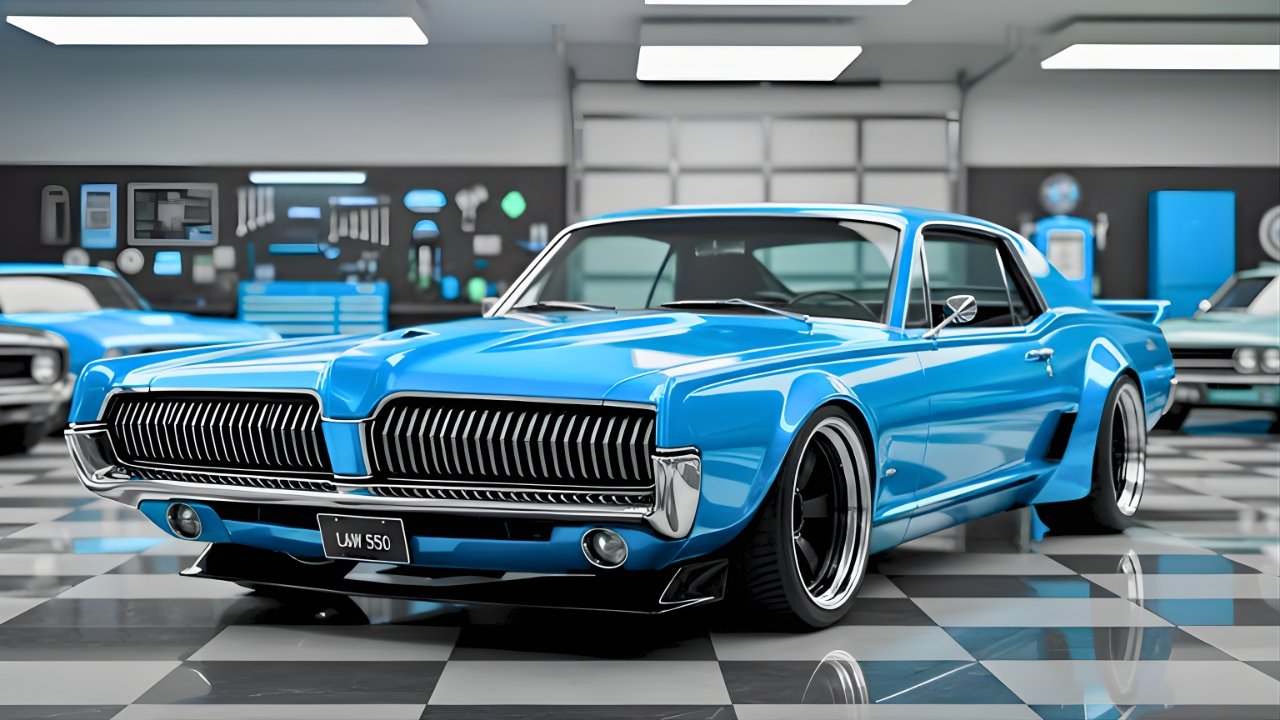Mercury Cougar : The 1967 Mercury Cougar represents one of the most underrated yet captivating stories in the history of American muscle cars. Introduced as Mercury’s first pony car, the Cougar was built to bridge the gap between the youthful Ford Mustang and the more sophisticated Ford Thunderbird. It offered performance, luxury, and style in one well-balanced package something few cars managed to achieve at the time. With its sleek body lines, hidden headlights, and muscular proportions, the Cougar looked every bit as fierce as its name suggested. Mercury designed the car for drivers who wanted power without giving up comfort and class. Beneath its smooth exterior, the Cougar was based on the Mustang’s platform but stretched to provide a longer wheelbase, resulting in a more elegant profile and improved interior space. This blend of sportiness and sophistication made the Cougar stand apart in an era dominated by raw muscle cars.
When the 1967 Mercury Cougar Made Its Debut and How It Changed the Market
The Mercury Cougar made its official debut on September 30, 1966, for the 1967 model year. It quickly gained attention as Mercury’s bold new entry into the pony car segment a growing market defined by cars like the Mustang, Chevrolet Camaro, and Pontiac Firebird. The Cougar, however, offered something different. While its competitors targeted younger buyers chasing excitement, the Cougar appealed to a slightly older, more refined crowd. It combined the thrill of performance with the comfort of a luxury coupe. The base Cougar came with a 289-cubic-inch V8 engine, producing around 200 horsepower. For those seeking more muscle, the GT version offered a 390-cubic-inch V8 that delivered a commanding 320 horsepower. Paired with a smooth three- or four-speed transmission, the car offered a driving experience that was both powerful and composed. Mercury also introduced the XR-7 model, which took the Cougar’s luxury appeal to another level. The XR-7 included features like leather upholstery, toggle switches, a wood-trimmed dashboard, and a rally-style instrument cluster elements rarely seen in American muscle cars of the time. This blend of refinement and power made the Cougar one of the most well-rounded cars of its era.
How the 1967 Mercury Cougar Stood Apart in Design and Performance
The design of the 1967 Cougar is one of its strongest legacies. Its front end, featuring hidden headlamps concealed behind an aggressive, vertical-bar grille, gave the car a unique face that distinguished it from anything else on the road. The sleek, fastback-style body and minimal chrome accents contributed to its sophisticated, almost European aesthetic. The rear of the car featured sequential taillights an innovative touch that enhanced its futuristic feel. Under the hood, Mercury engineers gave the Cougar enough muscle to compete with the best in its class. The GT package added performance suspension, power front disc brakes, and dual exhausts, turning the Cougar into a serious performance machine. Despite its muscle, the Cougar rode with a level of smoothness and control that surprised even critics. Its longer wheelbase and advanced suspension tuning made it more stable and comfortable than the Mustang, making it ideal for longer drives and everyday cruising. Inside, the cabin was designed with the driver in mind. Everything from the positioning of the gauges to the quality of the materials reflected Mercury’s goal of creating a performance car that didn’t feel stripped down. It was this perfect blend of aggression and grace that set the Cougar apart.
When the 1967 Mercury Cougar Became a Collector’s Dream
Over time, the 1967 Mercury Cougar has become a cherished collector’s item. When it first launched, it sold well over 150,000 units were produced in its first year but it was often overshadowed by the Mustang’s immense popularity. As decades passed, enthusiasts began to recognize the Cougar for what it truly was: a rare blend of muscle, refinement, and character. Today, the 1967 model, being the first of its kind, holds a special value among classic car collectors. Its one-year-only design features, like the distinct grille and sequential taillights, make it especially desirable. Restored XR-7 and GT models, in particular, fetch high prices at auctions, often rivaling early Mustangs in demand. Collectors appreciate its understated elegance a car that doesn’t shout for attention but commands respect the moment you see it.
How the 1967 Mercury Cougar’s Legacy Lives On Today
Even decades after its debut, the 1967 Cougar continues to influence car enthusiasts and designers alike. Modern muscle cars have often taken inspiration from its ability to balance power with poise. Unlike many classics that rely purely on nostalgia, the Cougar’s design remains timeless. Its proportions, detailing, and stance still look relevant today, embodying the golden age of American car design. Enthusiast clubs across the U.S. and worldwide celebrate the Cougar’s heritage, restoring and maintaining these machines with pride. There’s a certain charm to the 1967 model that modern cars struggle to replicate—the mechanical feel, the raw exhaust note, and the sense of connection between driver and machine. For collectors, owning a 1967 Mercury Cougar isn’t just about adding another car to their garage; it’s about preserving a piece of American automotive art.
Conclusion
The 1967 Mercury Cougar is much more than just another vintage car it’s a symbol of balance between performance and elegance. When it hit the roads, it redefined what a pony car could be by merging muscle with maturity. Its refined styling, innovative features, and powerful performance made it a standout in its era, and today, it remains one of the most respected hidden gems in the world of classic cars. For collectors and enthusiasts, the Cougar’s legacy is proof that true style and craftsmanship never fade they only grow more valuable with time.



